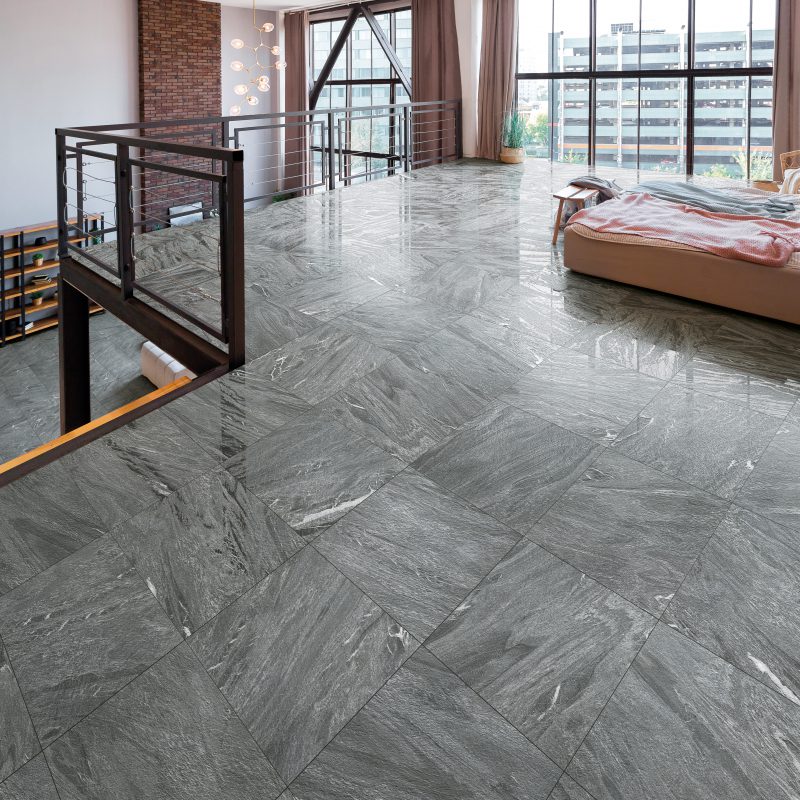Tile Selection
Porcelain Tile Installation Guide
When you are looking to install tile on your own, you’ll be glad to know that it is not a difficult task. As long as you have the right tools and follow our tile installation guide, you can be sure that your result will be great.
Step By Step Guide On How To Install Tile
Step #1: Prepare The Surface:
The first step of tile installation requires preparing the surface.
Simply put, you need the surface to be smooth, clean, and dry to ensure that you get the best results. While it may take you some time to level, patch, and repair any uneven or damaged areas, it will be all worth it. You should also make sure that the area is free of grease, soap scum, and wax.
When you are preparing the surface, you will need to remove any appliances, tri, and moldings that may be in your way.
Step #2: Begin The Layout:
As soon as you have the surface ready, the best thing to do is to make a center point of each one of the walls in the room. You will then need to use chalk to draw some lines between the center points of opposite walls. This will allow you to determine the center of the room.
Notice that it is perfectly normal to make some adjustments to ensure that you get perfect squares. So, take the time you need.
Now that this part is done, it is time to start laying a row of loose tiles along the center lines in both directions. Keep in mind that you should start from the center point. As you get to the walls, you will need to cut the tiles to ensure the perfect fit.
Step #3: Apply The Adhesive:
As a rule of thumb, you should only mix enough adhesive that you will use within 30 minutes.
All you need to do is to use the flat side of the trowel type and spread a 1/4″ coat on the surface of one grid area without covering the guidelines. You will then need to hold that trowel at a 45-degree angle. Use the notched side to comb adhesive into standing ridges.
As you remove the adhesive, you should see a uniform, ridged setting bed for your tile.
Keep in mind that you shouldn’t spread a larger area of your adhesive that can be set in 15 minutes.
Step #4: Only Cut The Tiles When Needed:
While you may feel the urge to cut all your tiles at once, this isn’t a good approach. Instead, when you are doing tile installation, it is far better to start by measuring and marking the cuts you need to make with a pencil or felt-tip pen on the tile surface. In case you need diagonal or pinpoint straight cuts, you can use a tile cutter. For the curves, it is better to use a nipper. You may then chip away small pieces.
In case you need full-length curved cuts, you should consider using a rod saw.
When you finish cutting your tiles, you should then smooth any sharp edges with a carborundum stone. This will give them a soft finish.
Step #5: Set Your Tile:
It is now time to set the first tile in place. Now that you already prepared the surface, came up with the layout you want, applied the adhesive, and cut the tile, you are now ready for the tile installation.
Keep in mind that you should always start in the center of your room and only go one grid at a time. Notice that you should finish each grid before you move to the next one. As an extra tip, you should start the first tile in the corner within each grid and work outward. This will make your job easier.
You should only place a tile at a time and you should always avoid sliding them to their place. Besides, you also want to add insert spaces as you st each tile. Another option is to leave equal joints between tiles.
As soon as you complete a grid, you should tap in all tiles with a wood block or a rubber mallet or hammer. This will make sure a level plane and a solid bond. You will then need to remove the excess adhesive. You should use a putty knife.
Don’t try to walk over the floor just yet. You should allow it to rest still for at least 24 hours.
#6: Grouting Joints:
Finally, the last step in tile installation is to grout the joints. This simply means fill the joints to make your floor into one mass.
The best thing you can do is to carefully read the grout package to follow all the instructions. Then, you will need to remove the tile spacers. But as you remove them, you will need to spread grout on the tile surface and use a squeegee to force it down into the joints. Notice that you should remove any excess grout immediately.
Just give it 15 to 20 minutes to set and then use a samp sponge to clean any residue from the surface and smooth the grout joints.
As you finish the room, you should wait for at least 72 hours before any heavy use and at least 3 weeks before applying sealers or polishes.


